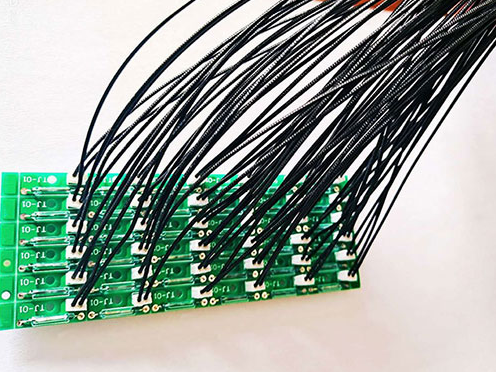The harm of counterfeit electronic components to PCBA circuit board. Next, you will also encounter how to judge whether electronic components are counterfeit.
If you only order a small amount of PCB electronic components, you can use multiple methods to check whether each electronic component is genuine or fake. Even if you encounter components that you think may be fraudulent, you can still use these techniques, even if you deal with larger amounts. You will find a list of methods below.
To use some of these techniques, you will need several tools. You should have a microscope with at least 30x magnification. It is also useful to have a high-quality camera, so you can take pictures of the parts and send them to an external source for verification. You also need a solvent (such as acetone) or a mixture of three parts mineral spirits and one part alcohol. This is a way to check whether electronic components have forged evidence.
Visual inspection of packaging and labels

First, visually inspect the PCBA packaging and packaging and the labels on the parts. Compare these aspects with other parts of the same model known to the original component manufacturer or OCM to find any differences between the two. Check the following for indicators of fake parts:
• Look for spelling errors and incorrect information on labels.
• Check if the part and date code on the label match the date and code of the part itself.
• Check whether the part codes match the part codes used by OCM and make sure they are correct.
• Make sure that the date code is meaningful, for example, the date code will not be too far in the past or even the future.
• Make sure to include all necessary items. For example, components that are sensitive to moisture should be accompanied by dry packaging and humidity indicator cards.
• Look for incorrect or sloppy logos.
• Make sure that the font used is the same as the font used by OCM.
• Check whether the country of origin is reasonable, and whether the specified country of origin matches the country code on the part.
Check PCBA components
Next, continue to inspect the components in more detail. This step will display instructions on how the part is manufactured, depending on whether the part is real.
• Check for dents on the parts. Legitimate manufacturers usually indent the parts to place the part or as part of the molding process. These dents should be uniform, which means they should be clean circles and consistent depth. Otherwise, the component may be counterfeit. OCM does not usually paint on the inside of these dents. They should be the same on different products of the same model. Counterfeiters sometimes sand the surface of the parts to remove the original marks on the surface of the integrated circuit so that they can be distributed as high-quality parts. Then, they sometimes add some materials to make it resurface. This is called "blacking out." This process may cause these dents to appear shallow in some areas. They may also make dents in the asphalt. The interior of these increased indentations looks rough, indicating that they are fake.
•Check the thickness and edges of PCBA components, you can change the thickness and edges by grinding. Due to the polishing used to eliminate the original code, some counterfeit electronic components are thinner than the genuine ones. If you look at the forging, you may also notice that the edges are uneven, the product in some areas is thinner than the product in other areas, or the surface is unusually shiny and polished. These signs may also be evidence of polishing. Using a microscope, you can sometimes see signs of directional sanding.
• Check the pins of the components. If you have real parts for reference, make sure that the distance between the pins is appropriate. If the item is genuine, the exposed metal will also be clean and non-oxidized. The pin should not be scratched, it looks like a pink silver, a bit dull. In fake parts, they may also look unusually new and shiny.
• Check the texture and appearance of the surface of PCBA components. Many parts are made of high-quality plastic and glass. This mixture produces wave crests and troughs and texture. Applying black dots of paint on these peaks and valleys can be smoother than painting on sandpaper. The difference is almost invisible with the naked eye, but it can be distinguished with a sufficiently sturdy microscope. Through practice, it will be easier to find differences. You should also pay attention to multiple textures in an area, such as indentation or letters with texture on it.